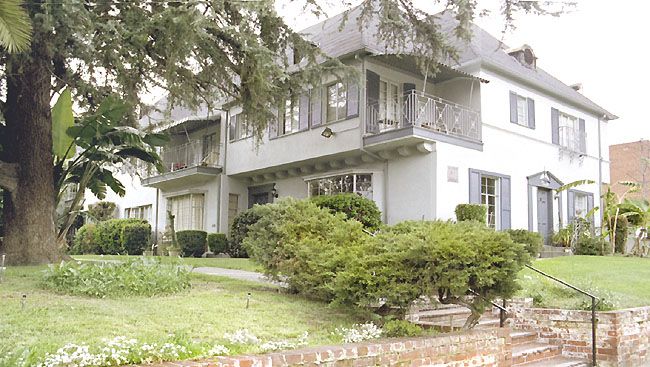
Nobel Prize laureate William Faulkner found it so unsatisfying that he asked to be released from his Warner Bros. contract. F. Scott Fitzgerald, whose writings defined the Jazz Age, tried once and vowed never to do it again. Even novelist and adventurer Ernest Hemingway took one look at it and advised other famous authors to “jump into your car and drive like hell back the way you came.”
What unnatural act were these three great novelists of the 20th century so alarmed about? Writing for the movies, of course.
Hollywood historically has lured successful novelists with glamour and the prospect of fast cash to try their hands at screenwriting. Nearly all came away frustrated with the collaborative process that took away their control over everything they wrote for the motion picture studios.
They continued to publish major works of literature during their screenwriting stints nonetheless, to the benefit of West Hollywood in particular. The novels, short stories, essays and scripts produced by those who lived in the unincorporated community at the time they worked in Hollywood are the core of the world-class literary heritage the city enjoys today.
Those works primarily came from former residents Faulkner, Fitzgerald, Hemingway, Aldous Huxley, Theodore Dreiser, Raymond Chandler and Christopher Isherwood. Their writings are yet another fascinating example of how motion pictures changed West Hollywood forever, forging its moniker as “the creative city” from the outset. Here’s a look at how four of them fared.
WILLIAM FAULKNER – ‘Civilization Begins with Distillation’
The most fateful thing that happened to Mississippi novelist William Faulkner on his first Hollywood sojourn was meeting Howard Hawks. Already a well-known director in 1932 when the author arrived in Tinseltown, Hawks asked Faulkner to develop a script for him and got four drafts within a month – unheard of productivity. The two men were one year apart in age and shared similar tastes, particularly a love of bird hunting.
The story goes that Hawks took Faulkner and actor Clark Gable on one of his hunting trips to the Imperial Valley. Hawks was friends with both but neither Faulkner nor Gable knew each other – and Hawks didn’t tell either one who the other was.
When Hawks and Faulkner began discussing books, Gable, doubtlessly the least well-read of the three, asked, “Mr. Faulkner, what do you think somebody should read if he wants read the best modern books?” After a moment, Faulkner named Ernest Hemingway, Willa Cather, Thomas Mann, John Dos Passos and himself.
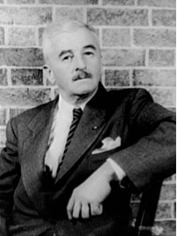
“Oh, do you write, Mr. Faulkner?” Gable asked. Faulkner’s response: “Yes, Mr. Gable. And what do you do?”
By all accounts, the iconic Southern author spent much of his time in Hollywood drinking and being eccentric. Like any other neophyte in the studio system, Faulkner was naïve at first, even entertaining hopes of writing for the famous movie star Mickey Mouse.
The character of the hard-drinking Southern novelist-turned-screenwriter W.P. Mayhew in the 1991 Ethan and Joel Cohen film “Barton Fink,” in fact, is said to be based loosely on Faulkner, giving a pretty lurid picture of the future Noble Prize winner in Hollywood.
Faulkner employed complex, stream-of-consciousness narrations and shifting points of view in his novels. The Guinness Book of World Records confirms “Absalom! Absalom!” has the longest sentence in English,5 but Faulkner adapted easily to writing movie scripts – possibly because of the flask of whiskey he kept in his coat pocket at all times on the job.
He was one of the few novelists to recognize the difference between dialogue in prose and dialogue onscreen, according to former Los Angeles Times movie critic Charles Champlin.
“Admittedly, screen writing was not Faulkner’s forte, but he was competent from his first Hollywood ventures in the early 1930s, and by 1942 he was a pro, inventive at plot construction and script-doctoring, capable of writing easily sayable dialogue,” Champlin wrote in a 1986 article.
LOCAL RESIDENCES: Faulkner was a screenwriter on and off for nearly two decades when he made 12 trips from his home in Oxford, Miss., to Hollywood, setting up residence in a different place each time. He lived at two different West Hollywood residences in the 1930s – the Garden of Allah apartments at 8512 W. Sunset Blvd., and at 930 Palm Ave. for undetermined periods, according to MovieLandDirectory.com.
SCREEN CREDITS: Faulkner worked on scripts for 17 motion pictures altogether, receiving six screen credits, making him the most successful novelist-turned-screenwriter of his day. Five of his six credited screenplays were for movies directed by Hawks. Faulkner secured his reputation with adaptations of Hemingway’s novel “To Have and Have Not” (1945) and Raymond Chandler’s detective novel “The Big Sleep” (1946). He also received screen credits for his work on “Today We Live” (1933), “The Road to Glory” (1936), “Slave Ship” (1937) and “Land of the Pharaohs” (1955).
MAJOR WORKS: Faulkner’s time in Hollywood (1932 to 1946) also was marked by the publication of five novels:
- “Absalom! Absalom!” (1936), the epic family saga seen as Faulkner’s supreme modernist fiction;
- “The Unvanquished” (1938), viewed as relatively conventional;
- “The Wild Palms” (1939), a technically adventurous novel with two counterpoint narratives alternating chapter by chapter;
- “The Hamlet” (1940), a satirical first volume of the Snopes trilogy valued for its stylistic richness; and
- “Go Down Moses” (1942), an intense exploration of the linked themes of racial, sexual and environmental exploitation.
RECOGNITION: Faulkner won the Nobel Prize for literature in 1949, leading to the National Book Award for Fiction for Collected Stories and the Legion of Honor in New Orleans. He also won the 1951 National Book Award for “The Collected Stories of William Faulkner.” A few years later, Faulkner was awarded two Pulitzer Prizes for Fiction for his novels “A Fable” (1954) and “The Reivers” (1962), along with another National Book Award for his novel “A Fable” set in France during WWI.
QUOTES: Even with his success at screenwriting, Faulkner still felt defeated by the process. He asked Warner Bros. to release him from his contract, the Los Angeles Times reported. “I feel I have made a bust at movie picture writing,” Faulkner stated in a letter to executives. “I have spent three years doing work (trying to do it) which was not my forte and which I was not equipped to do, and therefore I have misspent time which as a 47-year-old novelist I could not afford to spend. And I don’t dare misspend any more of it.” Warner Bros. didn’t release him from his contract.
The comfortably alcoholic Faulkner, who said he wrote mostly at night and always with a bottle of whiskey within reach, was quoted as saying that “Civilization begins with distillation.”
LITTLE KNOWN FACT: His favorite TV show was “Car 54, Where Are You?” (1961). Although he despised television, Faulkner would visit a friend’s house on Saturday nights to watch the comedic misadventures of a Mutt and Jeff pair of New York cops, according to the Internet Movie Database.
ERNEST HEMINGWAY – The Screenwriter Also Rises
Hemingway and Faulkner were the two big dogs of the American literary scene in the mid-20th century. Both were internationally revered, both were masters of the modernist novel and short story, and both won Nobel Prizes for literature as well as Pulitzer Prizes for fiction.
But they never met, and by all accounts, never talked by phone either. They corresponded regularly, though, during a decades-long “competitive” relationship based largely on their disparate writing styles. Compared with Faulkner, Hemingway’s writing style was understated, economical, and often described as taut prose.
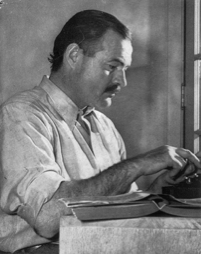
Many reliable sources report this exchange between the two:
Faulkner on Hemingway: “He has never been known to use a word that might send a reader to the dictionary.”
Hemingway: “Poor Faulkner. Does he really think that big emotions come from big words? He thinks I don’t know the ten-dollar words. I know them all right. But there are older and simpler and better words, and those are the ones I use.”
LOCAL RESIDENCES: Hemingway lived at the Garden of Allah apartments, 8512 W. Sunset Blvd., at some point during the 1930s, according to MovieLandDirectory.com.
SCREEN CREDITS: He professed no interest in screenwriting itself, preferring to assert his preferences for actors and overseeing other aspects of film adaptations of his works. Nonetheless he received a writing credit for the 1937 propaganda film “The Spanish Earth.”
QUOTE: Hemingway’s advice about dealing with Hollywood: ”You throw them your book, they throw you the money, then you jump into your car and drive like hell back the way you came.” He wrote extensively for television, though.
MAJOR WORKS: During his time in West Hollywood (most of the 1930s), Hemingway published the novel “To Have and Have Not” (1937), about fishing boat captain Harry Morgan who runs contraband between Cuba and the U.S. It was adapted to film in 1944 starring Humphrey Bogart and Lauren Bacall.
He published two nonfiction books during his time as a screenwriter in West Hollywood: “Death in the Afternoon” (1932) about the ceremony and traditions of Spanish bullfighting, as well as “Green Hills of Africa” (1935), about a month on safari in East Africa with his wife, Pauline Marie Pfeiffer.
One of Hemingway’s best short stories, “The Short and Happy Life of Francis Macomber” (1936), which was eventually adapted to the screen as the Zoltan Korda film “The Macomber Affair” (1947), also was published while he lived here. He won the Nobel Prize for literature in 1954 and a Pulitzer Prize for fiction in 1952 for “The Old Man and the Sea.”
ALDOUS HUXLEY – A Brave New World of Screenwriting
British intellectual and writer Aldous Huxley, author of “Brave New World” (1932), moved to Los Angeles in 1937 after hearing how much the studios were willing to pay successful novelists to become screenwriters. 21 Like many of his American counterparts, his transition to writing for movies was a little trickier to navigate than he might have anticipated.
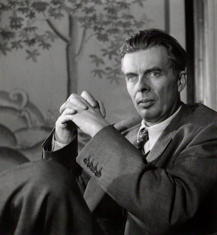
One of his only produced and credited scripts was a gloomy 1943 version of “Jane Eyre” starring Orson Welles as the tortured Rochester. The script’s strange and stiff dialogue had Welles saying lines like “Fortune’s knocked me about, kneaded me with her knuckles, ‘til I flatter myself I’m as hard and as tough as an India rubber ball.”
It’s possible to be too smart for your own good in a place like Hollywood. Huxley’s first draft of a script for Disney’s “Alice in Wonderland” ought to have been his onscreen masterpiece. Walt Disney personally rejected the British author’s peculiar adaptation instead, claiming he only understood every third word. Because his family knew Lewis Carroll, Huxley planned to use the Alice story to explore Carroll’s life and the “long-drawn struggles between Tory High Churchmen and liberal Modernists,” according to “Huxley in Hollywood” by David King Dunaway.
Then again, Tinseltown can be a puzzling place even for locals, much less British aristocrats new to L.A. A dinner Huxley had with close friend Harpo Marx in 1938 illustrates this point. Huxley suggested they make a film about the real Marx brothers with Groucho as Karl Marx, Chico as Bakunin, and Harpo as Engels. Harpo flatly reminded his dinner mate, “They don’t make movies like that here.”
One of his best screen credits came posthumously. It was for Ken Russell’s “The Devils,” adapted from “The Devils of Loudon,” Huxley’s 1952 nonfiction novel that investigates 17th century exorcism.
Huxley fell in and out of screenwriting work, not overly concerned about “making it” in the studio system. He and first wife Maria developed an intimate social circle that included the likes of writer and girl-about-town Anita Loos, Charlie Chaplin, Paulette Goddard, astronomer Edwin Hubble, fellow British expatriate Christopher Isherwood, Mercedes de Acosta, and Greta Garbo.
It’s whispered that Garbo and de Acosta were among the bisexual Maria Huxley’s playmates in L.A.’s lesbian underground, and that Maria also procured young women for her husband’s enjoyment, pointing to a very wild side of the Huxleys’ private life, which surely mitigated any disappointments from screenwriting.
LOCAL RESIDENCES: Huxley steadily produced novels and essay collections from several residences where he lived in West Hollywood from 1932 through 1956: 1340 N. Laurel Ave., 1425 N. Crescent Heights, 1320 N. Crescent Heights and 740 N. Kings Road.
MAJOR WORKS: As a West Hollywood resident, the British author was a prolific writer, contributing at least 48 articles to numerous magazines worldwide in addition to producing some 15 essay collections and several novels. His novels included:
- “Time Must Have a Stop” (1944), which follows the story of a young poet who holidays with his hedonistic uncle in Florence, Italy. Many of the philosophical themes discussed in the novel are explored further in Huxley’s 1945 work, “The Perennial Philosophy.”
- “Ape and Essence” (1948), which is largely a satire of the rise of large-scale warfare and warmongering in the 20th century, presenting a pessimistic view of the politics of mutually assured destruction. The book makes extensive use of surreal imagery, depicting humans as apes who, as a whole, will inevitably kill themselves.
- “The Genius and the Goddess” (1955), a fictional account of John Rivers, a student physicist in the 1920s who was hired out of college as a laboratory assistant to Henry Maartens, a Nobel Prize-winning, socially awkward physicist.
RECOGNITION: Huxley was nominated for a Nobel Prize in Literature three times while a West Hollywood resident – 1938, 1939 and 1955. He was nominated a total of seven times for a Nobel. In 1962, he was named a Royal Society Companion of Literature in Great Britain.
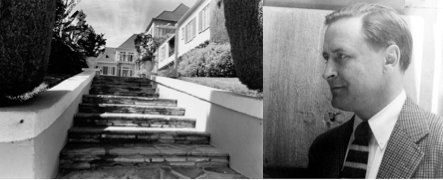
F. SCOTT FITZGERALD – A Second Chance after All
Leave it to F. Scott Fitzgerald to find redemption in Hollywood, the source of much turmoil in the latter part of his life. His works are the definitive writings of the Jazz Age, a term he coined. But when he returned to Hollywood in 1937 for a third – and ultimately final – attempt at writing for motion pictures, everything he had worked for had been lost.
The glow of “The Great Gatsby” (1925) had dimmed, he had fallen from grace and his celebrity was gone. The lost love of his life, Zelda, was in a North Carolina mental institution. He initially holed up at the Garden of Allah hotel in West Hollywood with his daughter, not quite understanding why these things had happened. 33
ONSCREEN CREDITS: His first stint as a screenwriter ended miserably. “I left with the money … but disillusioned and disgusted, vowing never to go back,” is how he described it. The third tenure with the studios at least produced his first and only film credit, awarded for “Three Comrades” (1938). His problems with the studios stem from alterations to his scripts and lack of control over his work, which eventually wound up watered-down in mediocre films designed to appeal to the largest possible audience.”
LOCAL RESIDENCES: Fitzgerald lived in several residences in or near West Hollywood during his tenures as a screenwriter: the Garden of Allah apartments at 8157 W. Sunset Blvd., 1403 N. Laurel Ave., 8221 W. Sunset Blvd., and 1443 N. Hayworth Ave., the house in which he passed away in 1940, according to MovielandDirectory.com.
MAJOR WORKS: Remarkably, some of the greatest works of Fitzgerald’s life emerged during his final trip to Hollywood, according to the New Yorker magazine. His unfinished novel “The Last Tycoon,” was published posthumously in 1941 and contains his famous quote: “There are no second acts in American lives.” During this period, he also published a collection of short stories, ‘The Pat Hobby Stories,’ that reflect much of his movie-world disappointments, often through the comedic and marginal screenwriter Pat Hobby.
National Public Radio said of the works Fitzgerald produced during his final trip to Hollywood: “He fights back … he gets to Hollywood, he finds himself again: He finds his love of writing, he finds his love of the world.”
Fitzgerald also published his fourth and final novel while here, “Tender Is the Night” (1934), in addition to 64 short stories. Shortly before his death, Fitzgerald saw himself as a failure because he hadn’t received any major literary awards. Today he’s considered one of the great writers of the 20th century.

Great detail! Yes, Ayn Rand lived next door to the 1914 carriage house cottages Harold Lloyd built for his actors, purely coincidentally home of the Rand Archive. She visited Tara, along with Upton Sinclair and many others as members of The Modern Forum. My building, Huxley’s for a spell, housed Gavin Lambert (Inside Daisy Clover) and Tennessee Williams lived briefly in my unit in the same building while they both collaborated on the teleplay for The Roman Spring of Mrs. Stone. Mart Crowley (The Boys in the Band) lived for decades in the Villa d’Este across the street. A vortex… Read more »
Great insight into great minds.
Ayn Rand lived at 7956 Norton Avenue
Yes, thanks so much for this.
Terrific post – great additional info beyond what I’ve heard before.